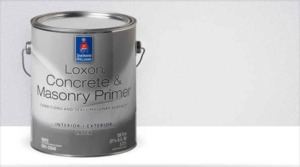How to Paint A Brick House
Should I Paint My Brick Home?
Painted brick homes are a mounting trend thanks in large part to the HGTV show, “Fixer Upper” starring Joanna and Chip Gaines.
The Atlanta area saw a huge surge in the construction of 4 sided brick homes early on in the 1900s in areas such as Buckhead, Morningside, West Paces Ferry and Northside Drive. Brick boomed again in the 1950s through the late 70s all around suburban Atlanta. Although the popularity waned for a few decades, it regained it’s statue in the executive home market in the early 1990s in the second suburbs of Alpharetta, Canton, Woodstock, Roswell and many others.
Making the decision to paint the exterior of your brick home is not one that most homeowners make lightly. It is highly recommended that you obtain professional services to ensure that the proper steps are taken to attain a quality finish and proper product adhesion.
How Do I Paint My Brick House?
Depending on what type of brick you have and it’s condition, determines the products that you will use to ensure adhesion and longevity.
Brick should be bleached and pressure washed to kill any mildew. If the brick has been previously painted and it is chalky, you will have to pressure strip with medium pressure to remove the chalkiness. The use of M-1 house wash is helpful to remove the chalkiness because it will emulsify the particles and them to release.
Test the chalkiness of a painted brick surface to see if it is lightly chalking, moderate or excessive.
If you rub the palm of your hand across the brick surface and very little comes off on your palm, you have light chalking. If you rub across the brick with your palm and all the fingerprints are full of chalk it is excessive. Moderate chalking will just barely fill the fingerprints of the palm of your hand.
After washing, a light chalkiness may remain but at that point you can proceed with priming the brick surface with Loxon Primer and then finish it with Loxon Acrylic Paint that is sprayed and back rolled.
After cleaning, if the surface remains moderately chalky, it is advisable to apply Loxon Masonry Conditioner. This clear coating helps to bind or glue the chalk so that get a sound surface that will allow for good adhesion of the primer and finish coats.
 If you are painting bare brick that has never been painted, check to see if the surface is sound. If it is not chalky and the mortar is not soft or sandy, proceed with the priming step with Loxon Primer.
If you are painting bare brick that has never been painted, check to see if the surface is sound. If it is not chalky and the mortar is not soft or sandy, proceed with the priming step with Loxon Primer.
Occasionally, small holes or cracks will become visible after the primer coat, these should be caulked with acrylic caulk before proceeding to the next step.
Once the primer has cured, the brick surface is ready for the finish coat of Loxon Acrylic Paint. The best process to use for the finish coat is to spray a small area fairly heavy and then while it is still wet, back roll the area to get the paint worked into the mortar joints.
Painting Brick Mortar
The mortar joints in brick construction can create a need for additional steps in the painting process and will need to be addressed correctly to ensure an optimal outcome and long lasting finish.
Mortar lines that are crumbling or missing may have to be re-pointed prior to the painting process.
If the brick face in the mortar is relatively flat (not deeply recessed) the finish coat can be sprayed or rolled on.
If the mortar is recessed significantly it should be sprayed and back rolled to get the paint into the depth of the mortar.
Weathered mortar that is chalky and crumbling to the touch will need to be sealed with the Loxon Masonry Conditioner as the primer and paint coats will not adhere to the sandy, gritty surface.
Masonry conditioner is a clear sealer that is a fairly thin material at absorbs into the mortar and porous brick to help bind up the loose sand of the surface. It can be applied with a sprayer or rolled on. When it dries it will bind the mortar sand and chalk so that is a good surface for adhesion.
Choosing the Right Paint Finish for Brick
The porous nature of brick and mortar require careful consideration when selecting the proper paint finish. While a satin latex finish is preferred when painting “siding” materials, brick paint with a satin finish may have a tendency to trap moisture in the brick.
The professional choice when painting brick is FLAT ACRYLIC PAINT as it creates a better bond and is less porous thereby repelling moisture and protecting the underlying surface from excessive water absorption.
Color Selection for Painted Brick
As with all Kenneth Axt Painting projects, the services of our professional color consultant are highly recommended. The color consultant can help you blend your new paint color with the roofing material, landscaping, surrounding neighborhood and your personal style.
Keeping in mind that darker colors will absorb more sunlight, heating the surface and expanding the porous surface of the brick and mortar, lighter and cooler colors are highly preferred for the longevity of the finish.
If you have more questions about painting your brick home, don’t hesitate to contact us at 770-928-8700, or REQUEST A FREE ESTIMATE on our website.








